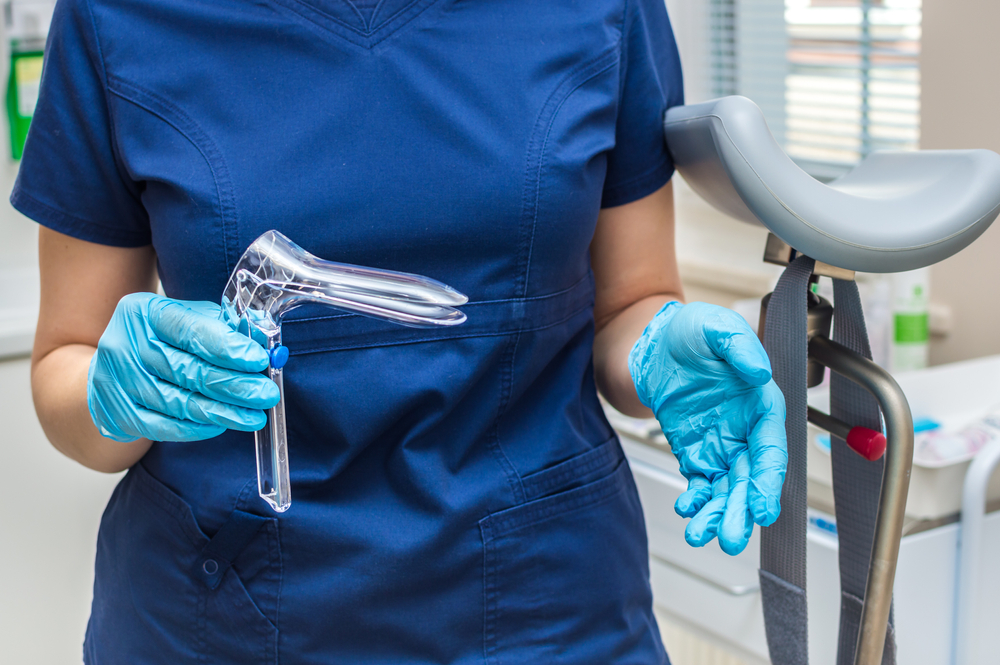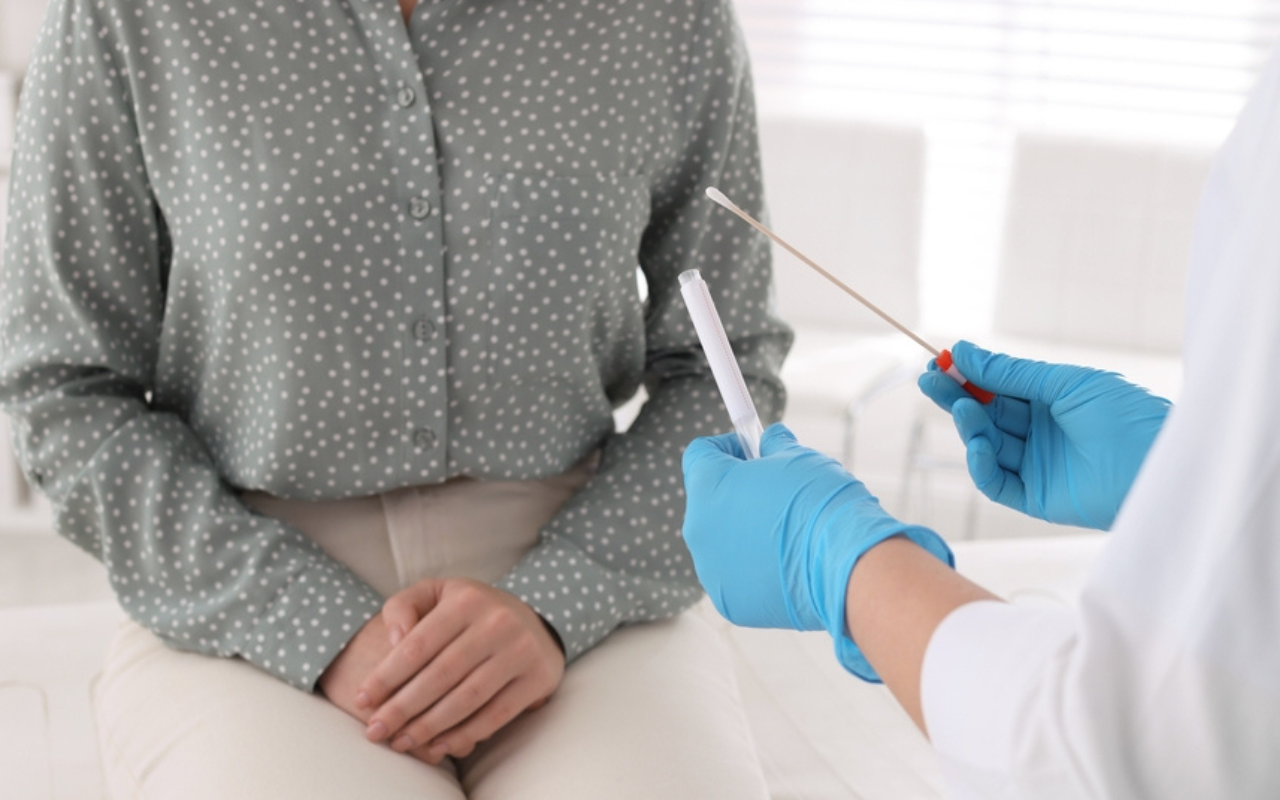Many women are now choosing to self-collect their HPV (human papillomavirus) swab rather than having a physician take the sample. Insight+ spoke with a GP and a member of the original national self-screening committee about Priceline’s plans to offer self-screening on site.
In 2017, Australia made the transition to HPV tests from cytology screening, which opened up the possibility of self-collection. Since July 2022, when self-collection was made available to all eligible women, uptake has increased and now around 40% have chosen this as their preferred method of screening.
Deborah Bateson is a Professor of Practice at The Daffodil Centre, a joint venture between Cancer Council NSW and the University of Sydney. Associate Professor Megan Smith is a Principal Research Fellow at The Daffodil Centre. InSight+ spoke with them about the change.
“The National Cervical Screening Program changed at the end of 2017 from women and eligible people [aged] 18–69 receiving a Pap smear every 2 years, to an HPV test for every 5 years from the age of 25 to 74. The reason is the superior sensitivity of the HPV test: it’s a more accurate test that can be performed less frequently,” said Professor Bateson.
The change to HPV testing also opened up the possibility of self-collection. Associate Professor Smith said that initially there wasn’t sufficient information regarding the accuracy of self-collection and it was therefore restricted at that time.
“The self-collected sample, taken from the vagina, with what we call a polymerase chain reaction (PCR) test, is just as accurate as a test taken from the cervix,” said Professor Bateson.
Uptake increasing
The Australian Government launched the National Strategy for Elimination of Cervical Cancer in November 2023.
“There was very low uptake of self-collection in the first few years since 2017 when it was restricted but this is now changing,” said Professor Bateson.
“The data from Q2, 2024 was showing that 34% of eligible people are self-collecting. Medicare data shows that in September it tipped over 40%,” said Associate Professor Smith.
“The hope is that we can eliminate cervical cancer as a public health problem — which means fewer than four cases per 100 000 people — by as early as 2035,” said Professor Bateson.

A plan to benefit all
Professor Bateson and Associate Professor Smith said that self-collection offers a major advantage when it comes to bringing under-represented groups into the screening program.
“One of the major problems in the old Pap testing program was that participation has plateaued a bit over 50%,” said Associate Professor Smith.
“We know from the available data that over 70% of people who are diagnosed with invasive cervical cancer are never screened, or under-screened,” Professor Bateson said.
“People with disability, Aboriginal and Torres Strait Islander people, people with low income, the LGBTQIA+ community, as well as culturally and linguistically diverse (CALD) people, particularly new migrants, haven’t benefited from the cervical screening program to the same extent as others,” she said.
“Interestingly, we’re seeing that the uptake of self-collection is even higher in those groups where traditionally screening has been lower. For example, in very remote areas like the Northern Territory and Tasmania, it’s now more than half of all screening tests,” said Associate Professor Smith.
“We are delighted the government is funding a campaign to raise awareness about self-collection — the ‘Own It’ campaign for CALD populations and Aboriginal and Torres Strait Islander people, as well as the LGBTQ+ community, and the Screen Me campaign for people with disability,” said Professor Bateson.
“The National Cervical Screening Program website has excellent resources for different priority populations,” she said.
“There’s lots of excellent information in different languages to explain the difference between self-collected and clinician-collected tests, which is important as we know there is a lack of awareness about this option. Unfortunately too, some clinicians may not always offer self-collection and there appears to be some lingering misinformation that the test is not as accurate,” said Professor Bateson.
Self-collection and sexual assault
Professor Bateson and Associate Professor Smith said that a significant group who may be missing out on screening is survivors of sexual assault, and that self-collection may overcome screening barriers for this group.
“If someone’s experienced child sexual abuse, or sexual assault, or if they are living with pelvic pain, self-collection can be a real game-changer to be able to bring people into the program. When people find out that cervical screening can be done without the need for a speculum, this can make an enormous difference to making a decision about whether to have a cervical screening test,” Professor Bateson said.
According to statistics released this year by the Australian Bureau of Statistics, there were 36 318 victims of sexual assault recorded in Australia in 2023, increasing by 11% from 2022. The rate increased from 126 to 136 victim–survivors per 100 000 (the highest rate recorded in the time series), 84% of victim–survivors were female, and around two in five (41%) were aged between 10 and 17 years at the date of the incident.
“Cervical screening is different to other screening tests as it does require a sample to be taken from the genital tract, which can be triggering for people with a history of sexual trauma. But this new option of taking your own sample can help address some of the screening inequities” said Professor Bateson.
“This includes for people with disability, who experience high rates of sexual abuse and trauma, and may have had negative cervical screening experiences in the past. Being able to offer self-collection can help overcome some of these challenges,” she said.
A focus on safety and consistency
Recently the pharmacy and beauty chain Priceline raised questions after announcing plans to offer self-screening to women.
Dr Lara Roeske is a GP, Chair of the RACGP, and was a member of the national program overseeing the introduction of self-screening.
“I’m a general practitioner, and cervical screening is a large part of the work I do. I helped create the original guidelines during the changeover to HPV-based screening and I’m currently part of that working party. I’ve been on the self-collection implementation committee within the National Cervical Screening Program for many years,” said Dr Roeske.
“I’m all for innovation and change. I understand the need for convenience and access. But as a first line proposal, this proposal seems unclear,” she said.
“I would have expected wide consultation with the sector, and with the program. And I’m not aware whether there has indeed been that wide consultation,” she said.
“Offering a test in isolation is wrong. Self-collection is part of a national program, one that’s world class, and that’s aiming to address equity and is involved in our race to eliminate cervical cancer in this country,” said Dr Roeske.
“All parts of the program are designed to work together to optimise outcomes. Part of optimising outcomes to prevent cancer is ensuring standardisation and quality, and a safety net. I’m unclear how the Priceline testing will engage with the National Cancer Register,” said Dr Roeske.
Dr Roeske said that if patients are not properly informed, they may also be given a bill for a procedure that would normally be covered by Medicare.
“We locate screening history and results. If you’ve had screening within the last year or two, you’re not eligible for self-collection. If you are screened, you’ll get a bill,” said Dr Roeske.
Professor Bateson, who is the former Chair of the National Cervical Screening Program Self-Collection Implementation Committee and has worked with Dr Roeske for many years, says that more information about the Priceline proposal is needed.
“There’s potential for alternative venues [to offer self-collection] but only if there is oversight by a health care professional and appropriate safety and quality measures in place including for follow-up of results and referrals” said Professor Bateson.
Associate Professor Smith said that around 7% of people screened will have a positive HPV test and need follow-up care.
“The National Self-Screening Program has a planned meeting with Priceline on the 31st of October to find out more about their proposed model of delivering self-collection,” said Professor Bateson.
For more information about HPV and self-collection:
For GPs (including a toolkit)
If you or someone you know is experiencing or has experienced sexual assault, family violence or intimate partner abuse, help and resources available at 1800 RESPECT.
Subscribe to the free InSight+ weekly newsletter here. It is available to all readers, not just registered medical practitioners.

 more_vert
more_vert
7% of people screened will need follow up. That statistic alone should be enough to indicated that screening outside of the context of a clinical relationship that can educated and inform and provide follow up. Longitudinal care from a trusted General Practitioner remains the appropriate place.